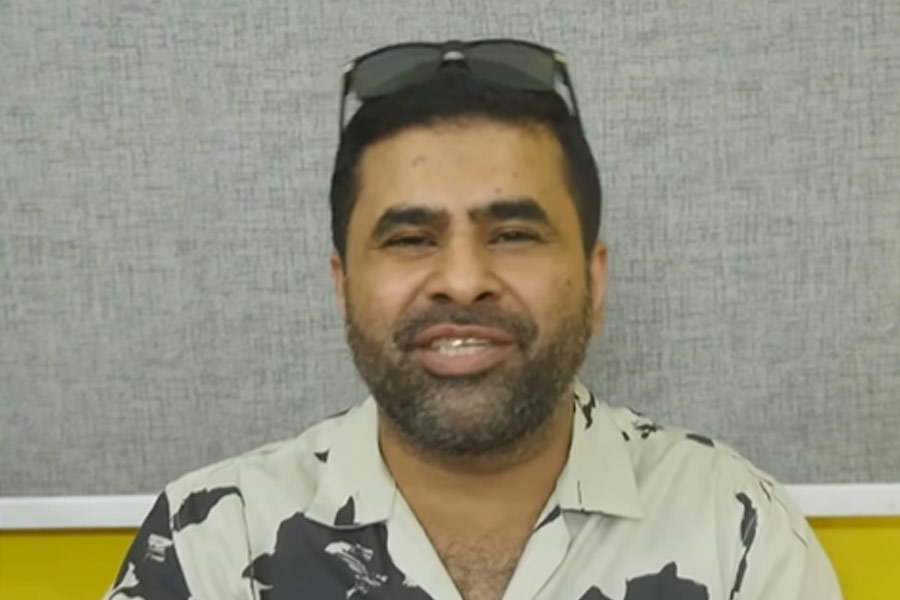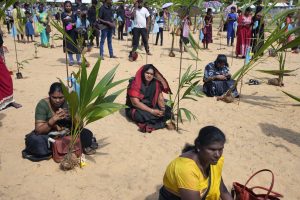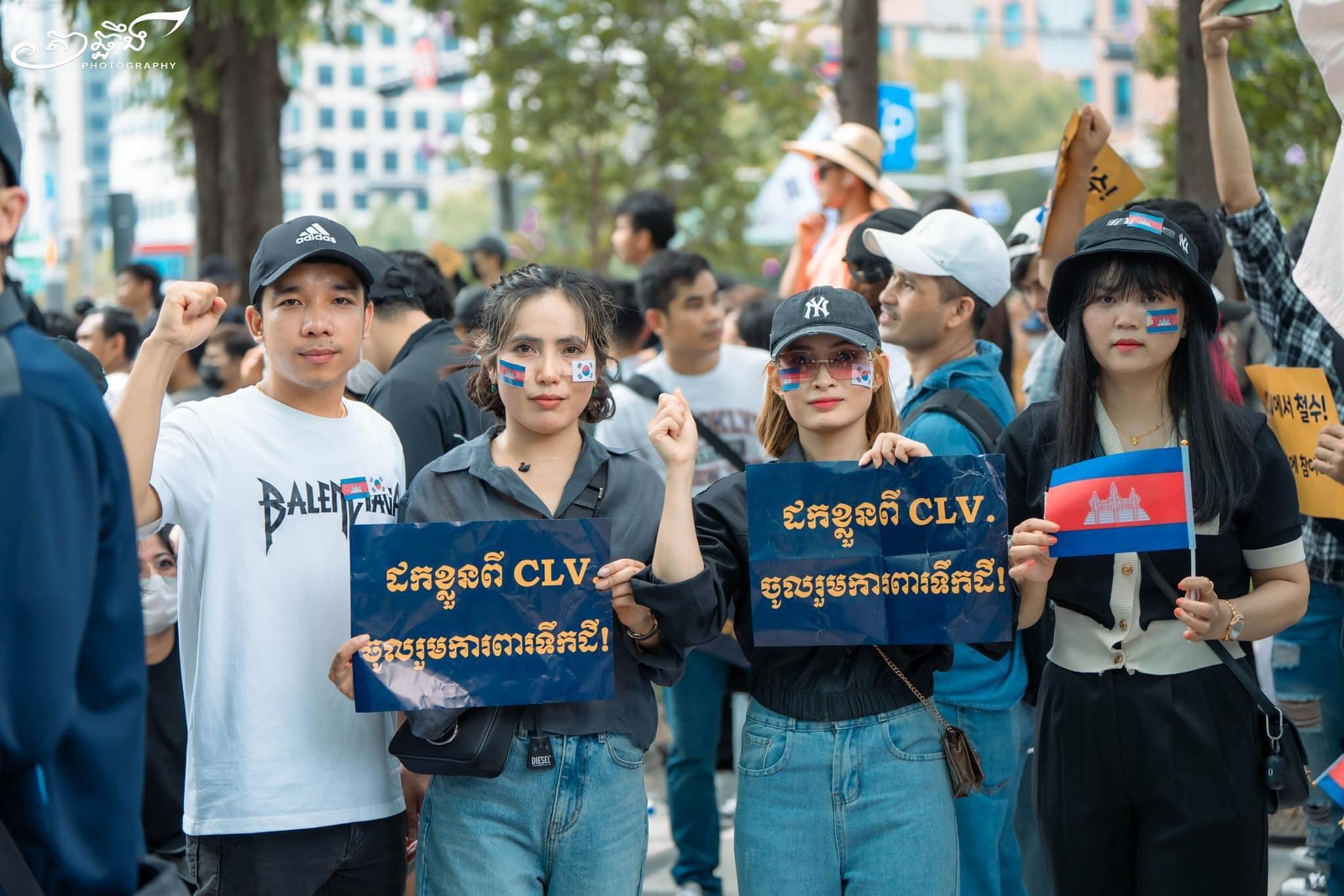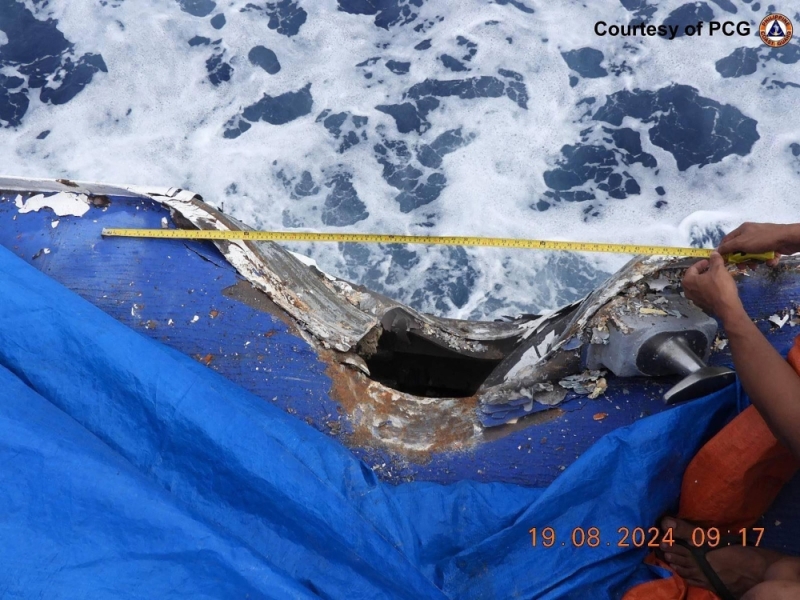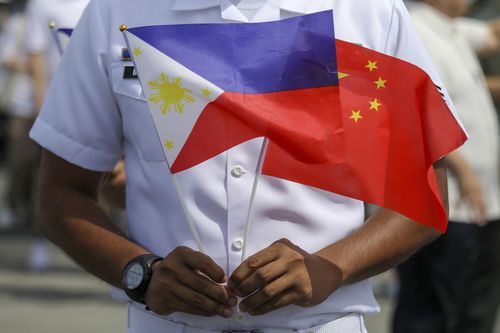10 Years Since ISIS Genocide, Kildani Moves Against Christian Officials in Nineveh
By Nadine Maenza on August 19, 2024
While Christians mark 10 years since the ISIS genocide in Nineveh, US-Sanctioned Rayan Al-Kildani and his Babylon Brigade are taking over, displacing Christian officials, and fostering corruption. Local leaders resisting his influence demand fair representation and protection of their community.
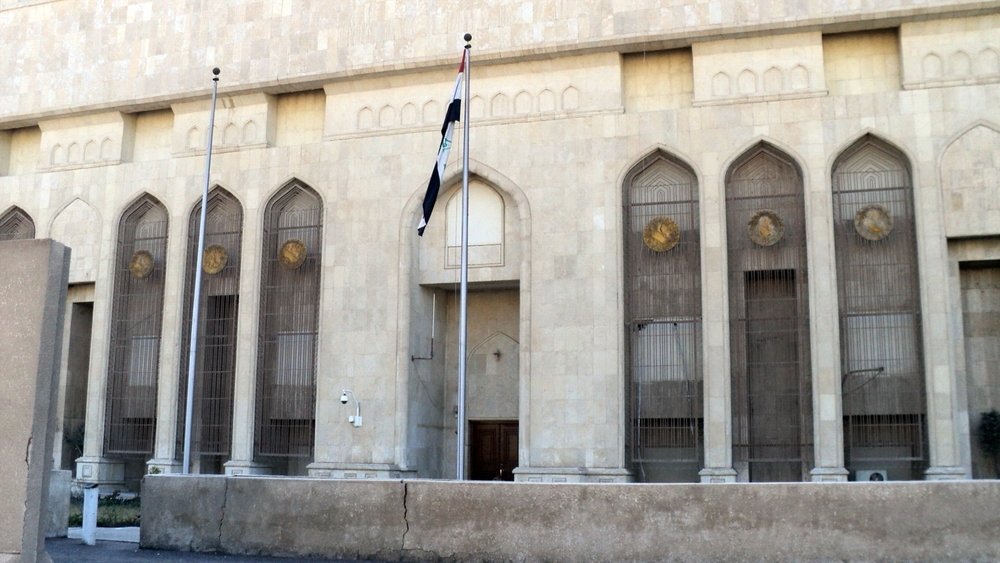
Image Credit
In the coming weeks, the Iraqi Federal Court is expected to rule on the illegal removal of the Nineveh Provincial Council on July 2 and replacement of 15 mayors and directors. If this action stands, it will remove the last independent Christian mayors outside of the Kurdistan Region and have a devastating impact on the historic Syriac, Assyrian, and Chaldean Christian cities of Bartella, Qaraqosh, Tel Kef, and the Yazidi homeland of Sinjar.
Before the 2003 US-led invasion of Iraq that toppled Saddam Hussein, there were 1.5 million Christians in Iraq. US policy unfortunately increased sectarianism, which, in turn, hurt religious and ethnic minorities. By the time ISIS arrived, only 700,000 Christians remained, and under Islamic State rule Christians were subjected to “forced transfer, persecution, pillage, sexual violence and slavery, and other inhuman acts such as forced conversions and the intentional destruction of cultural heritage.” Now, reports suggest between 150,000 and 250,000 remain.
The Struggle for Qaraqosh
The largest Christian city in Iraq, Qaraqosh (Bakhdida) in the Al-Hamdaniya District, was captured by ISIS on August 6, 2014. Because the community was aware of the horrific crimes in Sinjar and Mosul, most of the 60,000 residents fled to Erbil in the Kurdistan Region of Iraq (KRI). By the time Qaraqosh was liberated on October 19, 2016, with $135 million in damages, churches and homes destroyed, 40% of Christian residents had already emigrated abroad or had decided to stay in the KRI.
On July 18, 2019, the United States sanctioned Rayan Al-Kildani, the leader of the 50th Brigade militia, for human rights abuses, including intimidation, extortion, and harassment of women. With accusations of systemic looting and illegally seizing land, the US said, “The 50th Brigade was reportedly the primary impediment to the return of internally displaced persons to the Nineveh Plains.” Immediately upon the district’s liberation, Iranian-aligned militias began seizing lands, preventing many residents from returning.
The 50th Brigade is now known as the Babylon Brigade or Kataib Babiliyoun (KB). While they are supported by Iran and close to Iran’s Quds Force, they fall under the Government of Iraq’s Popular Mobilization Forces (PMF) or “Hashd al-Shaabi.” While Kildani claims it is a Christian group and calls himself “Rayan the Chaldean,” most members are Shia from Southern Iraq who have relocated to the Nineveh Plains to build Kildani’s political strength. The political arm is known as the Babylon Movement.
Unfortunately, the consequence of ignoring this deadline has cost Iraqis enormously, especially religious minorities.
After the fall of ISIS, Iranian-aligned militias filled the vacuum in the Nineveh Plains, particularly in disputed territories claimed by both the Governments of Iraq and Kurdistan, neither of which adequately invested in its governance or security. In fact, Article 140 of the 2005 Iraqi Constitution lays out a process to resolve the disputed territories with a deadline of 2007. Unfortunately, the consequence of ignoring this deadline has cost Iraqis enormously, especially religious minorities.
Despite accusations of bribing and threatening voters, Rayan and his Iran-backed Babylon Movement won four of the five seats reserved for Christians in the 2021 Iraqi parliamentary election, exploiting loopholes in election laws. Kildani relied on support from Iranian-backed Shia groups to elect his candidates instead of giving Christians their promised voice in the parliament. During provincial elections in 2023, Kildani repeated his success by winning four seats reserved for Christians in the provincial elections in Basra, Baghdad, Kirkuk, and Nineveh. While initially Kildani lost the Basra seat to a church-backed candidate, he brought a legal case against him with accusations of being in the Baath party, leading to his elimination. Kildani’s candidate was his replacement.
In July 2023, it was reported that Kildani pressured the President of Iraq, Abdul Latif Rashid, to revoke a decree recognizing Cardinal Louis Sako as Patriarch of the Chaldean Catholic Church, the largest Christian denomination in Iraq (67%) and in full communion with the Roman Catholic Church. This led to Cardinal Sako withdrawing his headquarters from Baghdad and fleeing to Erbil. Kildani even faked a meeting with the Pope to try and gain legitimacy. While I was with Cardinal Sako days after he arrived in Erbil, he shared his fear for the future of the church in Iraq under such threats. Fortunately, in April 2024, Prime Minister Mohammed Shia al-Sudani reinstated the decree, with Cardinal Sako immediately returning the church headquarters to Baghdad.
Resistance to Kildani
The Christian residents and leaders of Qaraqosh have refused to allow Kildani to take political control, although they endure regular harassment going through the militia checkpoints, especially women. On March 11, 2023, Kildani’s brother, Osama, who now commands the Babylon Brigade militia while Rayan focuses on the political movement, attempted to take over the base of the Christian Nineveh Plains Protection Units (NPU) in Qaraqosh, a force of 500 men organized for their protection.
Archbishop Younan Hanno and all the top Christian leaders, along with residents, marched towards the Babylon Brigade convoy to force the militia out of town. On August 5, the Council of Qaraqosh Archbishops, along with five Syriac, Assyrian, Chaldean political parties, held another protest against ongoing land theft, corrupt security forces, unfair elections for Christians, frustration with the demographic change, and anger at efforts to remove their political leadership and replace them with Kildani loyalists.
On September 26, a devastating fire broke out at a wedding reception in Qaraqosh, quickly igniting the entire building, killing 134 people, and injuring over 250, devastating the close-knit Syriac Catholic community. Just weeks after the fire, I was able to visit the reception hall and spend time sitting with families who were dealing with unimaginable grief. It seemed every family I met had lost at least one immediate family member, often a teenager, while also losing sisters, brothers, cousins, and parents.
Syriac Catholic Priest Father Adris Hanna, who spent time ministering to this community, wrote that “Exhaustion has taken its toll on the people, and thoughts of migration now loom large. The residents of Qaraqosh have faced persecution and expulsion, driven from their homeland due to their ethnicity and faith.” Many returned to rebuild after 2014, but even they are contemplating emigration due to constant threats.
With rumors that the wedding hall owner is affiliated with Kildani and angry with Kildani’s efforts to remove Christian officials, residents refused to let Kildani and his Babylon-affiliated Member of Parliament Duraid Jamil Eshoo to attend a mourning ceremony. Kildani threatened to attack a church if he was not allowed entry, and Duraid said, “If 100 died now, we’ll make them 200 next time, and we’ll break the bishop’s crosier on his head,” referring to Archbishop Hanno’s traditional staff. All of these comments were caught on video and shared with authorities.
The power grab
On July 2, 2024, Kildani finally convinced (or coerced) a majority of the Nineveh Provincial Council to make the drastic decision to remove 15 government officials in Qaraqosh, Bartella, and Tel Kef, and the strategically important Yazidi homeland of Sinjar.
Kildani’s pro-Iranian Babylon Movement controls 16 of the 29 members of the Nineveh Provincial Council, a huge surprise since this is a majority Arab area. He is part of the Nineveh Future Alliance, along with the Coordination Framework, the Patriotic Union of Kurdistan, and those holding minority quota seats.
The Opposition Alliance comprises the United Nineveh Alliance (9 seats) and the Kurdistan Democratic Party (4 seats). The opposition suspended its membership in the council, calling for the Council President to be removed, and filed a complaint with the federal court. The council’s decision brought stunning unity from five Christian political parties, saying the actions “exceeded the law and constitutional powers” and would have “serious negative consequences in society.” All changes are on hold until the court decides the case.
Kildani was also a leader in the alliance that took over the Kirkuk Provincial Council, voting on August 10 to replace the Governor and council speaker positions, leading to widespread news coverage and protests.
It’s important to note that Kildani is not a rogue player, but working closely with other Iranian-backed militia and political leaders such as former Prime Minister Nouri al-Maliki, PMF leader Falih al-Fayyad, and Qais al-Khazali, who in June warned that if the US continues its support of Israel “then America should know that it will put all its interests in the region, particularly in Iraq, at risk and make them a target.”
In fact, it is difficult to find any negative articles about Kildani in local news any longer, showing his enormous power and the fear he instills.
Kildani immediately took credit for the council’s actions on Alawla TV saying, “but today we have restored rights to the people of Nineveh…” While there are dozens of articles about this vote, no local news covered Kildani’s involvement. In fact, it is difficult to find any negative articles about Kildani in local news any longer, showing his enormous power and the fear he instills.
Protecting Iraq’s minorities
The Government of Iraq should challenge the Nineveh Provincial Council’s decision to replace officials with Kildani loyalists, giving him and Iranian-backed militias control of most of the Nineveh Plains. Harassment of religious and ethnic communities at checkpoints by Kildani’s Babylon Brigade or others should not be allowed or tolerated. Those that violate the law should be prosecuted.
Federal authorities must investigate and charge those like Kildani who engage in vote-buying and other election fraud.
Election rules must be changed to protect the political representation of Christians, Yazidis, and other religious and ethnic minorities in parliament so only minority community members can vote for their own representation. Federal authorities must investigate and charge those like Kildani who engage in vote-buying and other election fraud.
The US and the international community still have the political might to press for positive changes to protect these fragile religious minority communities, but they must act now.
The views represented in this piece are those of the author and do not express the official position of the Wilson Center.
About the Author

Nadine Maenza
Global Fellow;
President, International Religious Freedom Secretariat
By Nadine Maenza on August 19, 2024
While Christians mark 10 years since the ISIS genocide in Nineveh, US-Sanctioned Rayan Al-Kildani and his Babylon Brigade are taking over, displacing Christian officials, and fostering corruption. Local leaders resisting his influence demand fair representation and protection of their community.

Image Credit
In the coming weeks, the Iraqi Federal Court is expected to rule on the illegal removal of the Nineveh Provincial Council on July 2 and replacement of 15 mayors and directors. If this action stands, it will remove the last independent Christian mayors outside of the Kurdistan Region and have a devastating impact on the historic Syriac, Assyrian, and Chaldean Christian cities of Bartella, Qaraqosh, Tel Kef, and the Yazidi homeland of Sinjar.
Before the 2003 US-led invasion of Iraq that toppled Saddam Hussein, there were 1.5 million Christians in Iraq. US policy unfortunately increased sectarianism, which, in turn, hurt religious and ethnic minorities. By the time ISIS arrived, only 700,000 Christians remained, and under Islamic State rule Christians were subjected to “forced transfer, persecution, pillage, sexual violence and slavery, and other inhuman acts such as forced conversions and the intentional destruction of cultural heritage.” Now, reports suggest between 150,000 and 250,000 remain.
The Struggle for Qaraqosh
The largest Christian city in Iraq, Qaraqosh (Bakhdida) in the Al-Hamdaniya District, was captured by ISIS on August 6, 2014. Because the community was aware of the horrific crimes in Sinjar and Mosul, most of the 60,000 residents fled to Erbil in the Kurdistan Region of Iraq (KRI). By the time Qaraqosh was liberated on October 19, 2016, with $135 million in damages, churches and homes destroyed, 40% of Christian residents had already emigrated abroad or had decided to stay in the KRI.
On July 18, 2019, the United States sanctioned Rayan Al-Kildani, the leader of the 50th Brigade militia, for human rights abuses, including intimidation, extortion, and harassment of women. With accusations of systemic looting and illegally seizing land, the US said, “The 50th Brigade was reportedly the primary impediment to the return of internally displaced persons to the Nineveh Plains.” Immediately upon the district’s liberation, Iranian-aligned militias began seizing lands, preventing many residents from returning.
The 50th Brigade is now known as the Babylon Brigade or Kataib Babiliyoun (KB). While they are supported by Iran and close to Iran’s Quds Force, they fall under the Government of Iraq’s Popular Mobilization Forces (PMF) or “Hashd al-Shaabi.” While Kildani claims it is a Christian group and calls himself “Rayan the Chaldean,” most members are Shia from Southern Iraq who have relocated to the Nineveh Plains to build Kildani’s political strength. The political arm is known as the Babylon Movement.
Unfortunately, the consequence of ignoring this deadline has cost Iraqis enormously, especially religious minorities.
After the fall of ISIS, Iranian-aligned militias filled the vacuum in the Nineveh Plains, particularly in disputed territories claimed by both the Governments of Iraq and Kurdistan, neither of which adequately invested in its governance or security. In fact, Article 140 of the 2005 Iraqi Constitution lays out a process to resolve the disputed territories with a deadline of 2007. Unfortunately, the consequence of ignoring this deadline has cost Iraqis enormously, especially religious minorities.
Despite accusations of bribing and threatening voters, Rayan and his Iran-backed Babylon Movement won four of the five seats reserved for Christians in the 2021 Iraqi parliamentary election, exploiting loopholes in election laws. Kildani relied on support from Iranian-backed Shia groups to elect his candidates instead of giving Christians their promised voice in the parliament. During provincial elections in 2023, Kildani repeated his success by winning four seats reserved for Christians in the provincial elections in Basra, Baghdad, Kirkuk, and Nineveh. While initially Kildani lost the Basra seat to a church-backed candidate, he brought a legal case against him with accusations of being in the Baath party, leading to his elimination. Kildani’s candidate was his replacement.
In July 2023, it was reported that Kildani pressured the President of Iraq, Abdul Latif Rashid, to revoke a decree recognizing Cardinal Louis Sako as Patriarch of the Chaldean Catholic Church, the largest Christian denomination in Iraq (67%) and in full communion with the Roman Catholic Church. This led to Cardinal Sako withdrawing his headquarters from Baghdad and fleeing to Erbil. Kildani even faked a meeting with the Pope to try and gain legitimacy. While I was with Cardinal Sako days after he arrived in Erbil, he shared his fear for the future of the church in Iraq under such threats. Fortunately, in April 2024, Prime Minister Mohammed Shia al-Sudani reinstated the decree, with Cardinal Sako immediately returning the church headquarters to Baghdad.
Resistance to Kildani
The Christian residents and leaders of Qaraqosh have refused to allow Kildani to take political control, although they endure regular harassment going through the militia checkpoints, especially women. On March 11, 2023, Kildani’s brother, Osama, who now commands the Babylon Brigade militia while Rayan focuses on the political movement, attempted to take over the base of the Christian Nineveh Plains Protection Units (NPU) in Qaraqosh, a force of 500 men organized for their protection.
Archbishop Younan Hanno and all the top Christian leaders, along with residents, marched towards the Babylon Brigade convoy to force the militia out of town. On August 5, the Council of Qaraqosh Archbishops, along with five Syriac, Assyrian, Chaldean political parties, held another protest against ongoing land theft, corrupt security forces, unfair elections for Christians, frustration with the demographic change, and anger at efforts to remove their political leadership and replace them with Kildani loyalists.
On September 26, a devastating fire broke out at a wedding reception in Qaraqosh, quickly igniting the entire building, killing 134 people, and injuring over 250, devastating the close-knit Syriac Catholic community. Just weeks after the fire, I was able to visit the reception hall and spend time sitting with families who were dealing with unimaginable grief. It seemed every family I met had lost at least one immediate family member, often a teenager, while also losing sisters, brothers, cousins, and parents.
Syriac Catholic Priest Father Adris Hanna, who spent time ministering to this community, wrote that “Exhaustion has taken its toll on the people, and thoughts of migration now loom large. The residents of Qaraqosh have faced persecution and expulsion, driven from their homeland due to their ethnicity and faith.” Many returned to rebuild after 2014, but even they are contemplating emigration due to constant threats.
With rumors that the wedding hall owner is affiliated with Kildani and angry with Kildani’s efforts to remove Christian officials, residents refused to let Kildani and his Babylon-affiliated Member of Parliament Duraid Jamil Eshoo to attend a mourning ceremony. Kildani threatened to attack a church if he was not allowed entry, and Duraid said, “If 100 died now, we’ll make them 200 next time, and we’ll break the bishop’s crosier on his head,” referring to Archbishop Hanno’s traditional staff. All of these comments were caught on video and shared with authorities.
The power grab
On July 2, 2024, Kildani finally convinced (or coerced) a majority of the Nineveh Provincial Council to make the drastic decision to remove 15 government officials in Qaraqosh, Bartella, and Tel Kef, and the strategically important Yazidi homeland of Sinjar.
Kildani’s pro-Iranian Babylon Movement controls 16 of the 29 members of the Nineveh Provincial Council, a huge surprise since this is a majority Arab area. He is part of the Nineveh Future Alliance, along with the Coordination Framework, the Patriotic Union of Kurdistan, and those holding minority quota seats.
The Opposition Alliance comprises the United Nineveh Alliance (9 seats) and the Kurdistan Democratic Party (4 seats). The opposition suspended its membership in the council, calling for the Council President to be removed, and filed a complaint with the federal court. The council’s decision brought stunning unity from five Christian political parties, saying the actions “exceeded the law and constitutional powers” and would have “serious negative consequences in society.” All changes are on hold until the court decides the case.
Kildani was also a leader in the alliance that took over the Kirkuk Provincial Council, voting on August 10 to replace the Governor and council speaker positions, leading to widespread news coverage and protests.
It’s important to note that Kildani is not a rogue player, but working closely with other Iranian-backed militia and political leaders such as former Prime Minister Nouri al-Maliki, PMF leader Falih al-Fayyad, and Qais al-Khazali, who in June warned that if the US continues its support of Israel “then America should know that it will put all its interests in the region, particularly in Iraq, at risk and make them a target.”
In fact, it is difficult to find any negative articles about Kildani in local news any longer, showing his enormous power and the fear he instills.
Kildani immediately took credit for the council’s actions on Alawla TV saying, “but today we have restored rights to the people of Nineveh…” While there are dozens of articles about this vote, no local news covered Kildani’s involvement. In fact, it is difficult to find any negative articles about Kildani in local news any longer, showing his enormous power and the fear he instills.
Protecting Iraq’s minorities
The Government of Iraq should challenge the Nineveh Provincial Council’s decision to replace officials with Kildani loyalists, giving him and Iranian-backed militias control of most of the Nineveh Plains. Harassment of religious and ethnic communities at checkpoints by Kildani’s Babylon Brigade or others should not be allowed or tolerated. Those that violate the law should be prosecuted.
Federal authorities must investigate and charge those like Kildani who engage in vote-buying and other election fraud.
Election rules must be changed to protect the political representation of Christians, Yazidis, and other religious and ethnic minorities in parliament so only minority community members can vote for their own representation. Federal authorities must investigate and charge those like Kildani who engage in vote-buying and other election fraud.
The US and the international community still have the political might to press for positive changes to protect these fragile religious minority communities, but they must act now.
The views represented in this piece are those of the author and do not express the official position of the Wilson Center.
About the Author

Nadine Maenza
Global Fellow;
President, International Religious Freedom Secretariat
Read More

Middle East Program
The Wilson Center’s Middle East Program serves as a crucial resource for the policymaking community and beyond, providing analyses and research that helps inform US foreign policymaking, stimulates public debate, and expands knowledge about issues in the wider Middle East and North Africa (MENA) region. Read more

Middle East Program
The Wilson Center’s Middle East Program serves as a crucial resource for the policymaking community and beyond, providing analyses and research that helps inform US foreign policymaking, stimulates public debate, and expands knowledge about issues in the wider Middle East and North Africa (MENA) region. Read more


